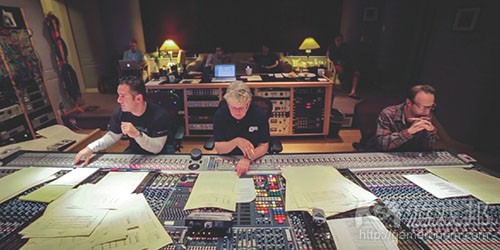来自专家的11个游戏音效设计小窍门
作者:James Batchelor
我们咨询了一些来自大型工作室和服务公司的音频专家如何创造出色的游戏声音。
Game Music Connect的联合创始人,同时也是音频专家和编曲家的John Broomhall:
尽早在你的项目中添加音频。这能够帮助你强化整体的游戏体验以及游戏的感知质量,并且在团队协作以及激发团队灵感方面,音频创造性也具有非常重要的作用。
Sounding Sweet的录音师兼总监Ed Walker:
有时候视听同步总是会遭遇忽视。大多数数字音频工作站(DAW)都能设置一个“视频同步补偿”以确保视频回放与音频保持同步。在开始任何ADR,Foley(游戏邦注:日常声音再现)或过场动画声音运行前,通过校准DAW能够有效节省时间和成本。
93 Steps的联合创始人,编曲家和音频总监Francesco Libralon:
当我在选择音轨和音效的风格时,我会关注于频率。限制相同的音效数量也很有用;同一时间出现更多相同的音效将占据相应频率更多空间。
自由音效设计师Christopher Randle:
一个声音的感知宽度会随着音源的远离而缩小。而在Unity的3D声音设定中添加高低频规律性衰减到分布指数上能够通过立体声去模仿这种变化。这特别适用于较大的对象以及包含各种空间信息的声音,如枪声。
Creative Assembly的声音设计师Haydn Payne:
对于我来说,无需亲自前往火山便能录制火山岩浆咕噜咕噜冒泡的声音的方法便是煮一大锅粥或在一个塑料容器上贴张纸,然后戳破一个洞,并往里面吹气。这是一种既简单,又便宜,同时还很安全的做法。
参与《纪念碑谷》的自由音频专家Stafford Bawler:
让你的UI/音频HUD音效和音轨能够整齐出现在游戏中的一种方法便是拓宽它的立体声场。这能让这些声音待在各自的音频空间,而这种方法特别适用于像赛车游戏等紧凑的3D行动游戏。
Pinewood Studios的声音设计师Peter Hanson:
当我进入一个创意流时我便不想打破它去执行一些基本的技术任务,所以我总是会在一开始便做好这些事:插入外部发动机,启动合成器,加速硬盘驱动器,标注你的i/os,为你的总线命名,插入一些你能够快速发送的一般回馈。确保你的工作环境足够方便简单。
如果概要看起来太复杂了,你可以在脑子里尝试将其分解成不同层面。添加一些层面并听看看漏掉了哪些内容,要知道最佳解决方法总是会自己呈现出来。
不要完全依赖于L1。电影,电视和游戏都拥有自己的响度标准—-你可以先问自己是否需要这种程度的声响。不过别误会,我很喜欢L1,但是你要避免因此而失去智态与动态。
尽可能拥有更大的声音库存,并且你也要清楚大多数人都拥有这样的库存。如果你想要独特的声音,请主动去记录它们。
不要害怕重新开始。如果你坚持一个理念30分钟后还没有任何结果的话,请果断放弃它!
(本文为游戏邦/gamerboom.com编译,拒绝任何不保留版权的转发,如需转载请联系:游戏邦)
11 top game sound design tips
By James Batchelor
We ask audio experts from leading studios and services firms for their advice on ensuring your game sounds as good as it looks
John Broomhall, Game Music Connect co-founder, audio specialist and composer:
Involve audio early in your project. It really can provide massive ‘bang for buck’ in enhancing the overall gaming experience and perceived quality of your title – but audio creatives can contribute best when they’re in at the top collaborating and sparking off inspiration within the team.
Ed Walker, sound engineer and director, Sounding Sweet:
Audiovisual synchronisation is sometimes overlooked. Most DAWs (Digital Audio Workstations) are capable of setting a ‘Video Sync Offset’ to ensure that video playback is synchronised with the audio. Save time and money by making sure this is calibrated correctly before starting any ADR, Foley or cutscene sound work.
Francesco Libralon, co-founder, composer and audio director, 93 Steps:
When I choose the genre and the style of soundtracks and sound effects, I pay attention to frequencies – they don’t have to fight one another. Limiting the number of identical sound effects can be useful, too; more identical sound effects at the same time give more volume to the corresponding frequencies.
Christopher Randle, freelance sound designer:
The perceived width of a sound diminishes as the source gets further away. Adding a rolloff to the spread parameter in Unity’s 3D sound settings can imitate this with stereo audio. This is especially useful for large objects and sounds that contain a lot of spatial information, like gunshots.
Haydn Payne, sound designer, Creative Assembly:
My method for recording thick gloopy lava bubbling sounds without visiting a volcano is to make a really large batch of porridge or wallpaper paste in a plastic container, stick a hollow tube into it, and blow through it. Easy, cheap, and safe enough to do in a studio if you’re careful.
Stafford Bawler, freelance audio expert behind Monument Valley:
A way to make your UI/audio HUD sound effects and music tracks sit neatly in a game mix is by widening their stereo field. This helps them sit in their own audio space, which is especially useful in a busy 3D action game such as a racer.
Peter Hanson, sound designer, Pinewood Studios:
When I’m in a creative flow, I don’t like to break it to perform rudimentary technical tasks, so I do most of this before I start: plug in your outboard, power up synths, spin up hard drives, label your i/os, name your busses, insert some generic returns you can send to quickly, and so on. Make your working environment as quick and easy as possible.
If a brief seems overwhelmingly complicated, try to break it down into layers in your head. Add the layers you can and listen to what’s missing, the solution often presents itself.
Don’t smash it with an L1 to make it full scale. Film, TV and games all have some kind of loudness standard – ask yourself if it needs to be this loud. Don’t get me wrong, I love an L1 but be aware of robbing yourself of transients and dynamics.
Get as many libraries as you can but remember most people already have them. If you want unique sounds, go record them.
Don’t be afraid to start over. If you haven’t gotten anywhere with an idea after 30 minutes, ditch it!(source:develop-online)
上一篇:听Will Mallouk讲述如何通过云端发展游戏业务
下一篇:电子游戏产业中的秘密开发者








































 闽公网安备35020302001549号
闽公网安备35020302001549号